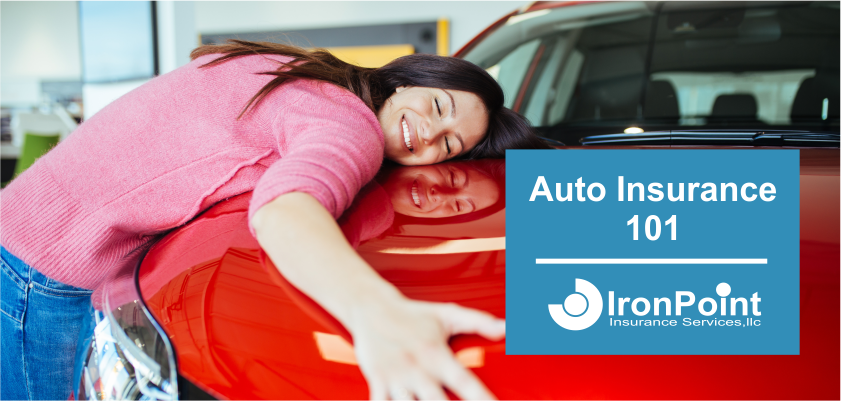How Does Car Insurance Work and Do I Need It?

You know you need to buy car insurance, but you’re not always certain how it works. In short, car insurance is as a protection against potentially devastating financial consequences that may result after a car accident, theft, or other incidents beyond your control. When the unforeseen happens, it’s your car insurance company that can pay for vehicle repairs, medical expenses, and damages or injuries you may cause to another driver. But that still doesn’t answer the question, how does car insurance work? Let’s take a further look.
What is car insurance?
Car insurance is a product or service you can buy that covers damage to your vehicle and protects you financially if you become liable for someone else’s injuries or damages as a result of a car accident. Additionally, auto insurance can pay for medical bills if you or your passengers are injured in an accident or you’re hit by an uninsured or underinsured driver. Your policy is a contract between you and an insurance company that agrees to protect you up to a certain limit, agreed to between you and the insurer.
Do I need car insurance?
In some form, Car insurance is required in all states. This is called financial responsibility, and it basically means that if you cause an accident, you will have a minimum level of liability insurance to cover property or injury damages you may cause to other people. If you drive without proper insurance, you could be subject to a fine, have your license suspended or revoked, or even go to jail, so make sure you have proper insurance coverage when you drive.
What does auto insurance cover?
Auto insurance covers a variety of situations that can occur on or off the road. Some of the coverages are mandatory, and others are optional, so it’s important to review the coverages offered so you can select the protections that fit your lifestyle or uses. Although coverages may vary by state, below are the standard coverages you can find on most auto insurance policies.
Liability:
Liability coverage is required in 49 states. If you’re liable in an auto accident, liability coverage can pay for:
- Damage to other cars
- Damage to objects (mailboxes, phone poles, houses, etc.)
- Injuries to other drivers and their passengers
- Lawsuits if you’re sued because of an accident
Explore more on liability insurance.
Comprehensive:
Comprehensive coverage protects against damage to your car from events beyond your control, including:
- Theft
- Windshield and glass damage
- Vandalism, riots, explosions, and fire
- Falling trees/branches and other objects
- Rocks or other objects kicked up by cars
- Storms, floods, wind, hail, earthquakes, and lightning
- Accidents with animals (e.g., hitting a deer)
Explore more on comprehensive insurance.
Collision:
Collision coverage covers your vehicle if it overturns or collides with another vehicle or object, including trees, guardrails, and fences.
Explore more on collision insurance.
Medical payments or personal injury protection (PIP):
Medical payment coverage is offered in most states, while personal injury protection is available only in the states that require it to be offered. Both coverages cover medical bills if you or your passengers are injured in a car accident (regardless of fault). PIP is a broader coverage that varies by state and, depending on the state, may pay for medical bills, lost wages, rehab costs, and other expenses resulting from an auto accident.
Uninsured/underinsured motorist bodily injury:
Uninsured/underinsured motorist bodily injury coverage pays for injuries if you’re hit by a driver with no insurance or not enough coverage.
Uninsured/underinsured motorist property damage:
Uninsured/underinsured motorist property damage coverage pays for damage to your car if you’re hit by an uninsured or underinsured driver.
Explore more on uninsured motorist coverage.
Rental car reimbursement
Rental car reimbursement coverage pays for rental car fees while your car is being repaired due to a covered accident.
Loan/lease payoff:
Also called gap coverage, loan/lease payoff coverage pays off the gap between what your car is worth and how much is left on your loan.
Explore more on gap insurance.
Roadside assistance:
Roadside assistance coverage covers situations like lockouts, towing, jump-starts, and more, so you’re never stranded on the side of the road.
Explore more on auto insurance coverages.
How is car insurance priced?
Pricing auto insurance is a complex actuarial and statistical solution. In order to accurately price auto insurance, insurance companies rely on several years of loss and premium data that they segment into the rating variables that relate to the questions we are asked during the quote and application process. While not all insurance carriers use the same rating factors, below are some of the most common factors insurers consider when calculating your premium:
- Accident history: Fewer accidents means you’re less likely to have one in the future.
- Violations: Tickets on your motor vehicle report typically raise the cost of auto insurance.
- Your vehicle’s value: A cheaper car costs less to repair.
- Age: More experience behind the wheel means you’re less likely to have an accident. Your rate will usually go down as you get older, though some insurers may begin to increase rates for older drivers around age 65 and up.
Want a bit more on pricing? See more on what impacts your car insurance price or the average cost of car insurance.
What is a deductible?
The deductible you select on your auto insurance policy is the amount you agree to pay out of your own pocket as your contribution to resolving your claim.
For example, if you have a $500 deductible, hit your neighbor’s fence causing $2,000 in required repairs to your vehicle. You would pay $500, and your insurer would pay the remaining $1,500. Your insurance company will offer you several deductible options, you will be able to choose the option that works best for you.
While you select a deductible, you will notice that higher deductibles cost less. This means that the more of the repair or claim cost you elect to retain, the lower the overall cost. Just note, in the event of a claim you will have to be able to pay your deductible before you can get your vehicle back on the road, so select a deductible that is reasonable for your budget.
Explore more on car insurance deductibles.
